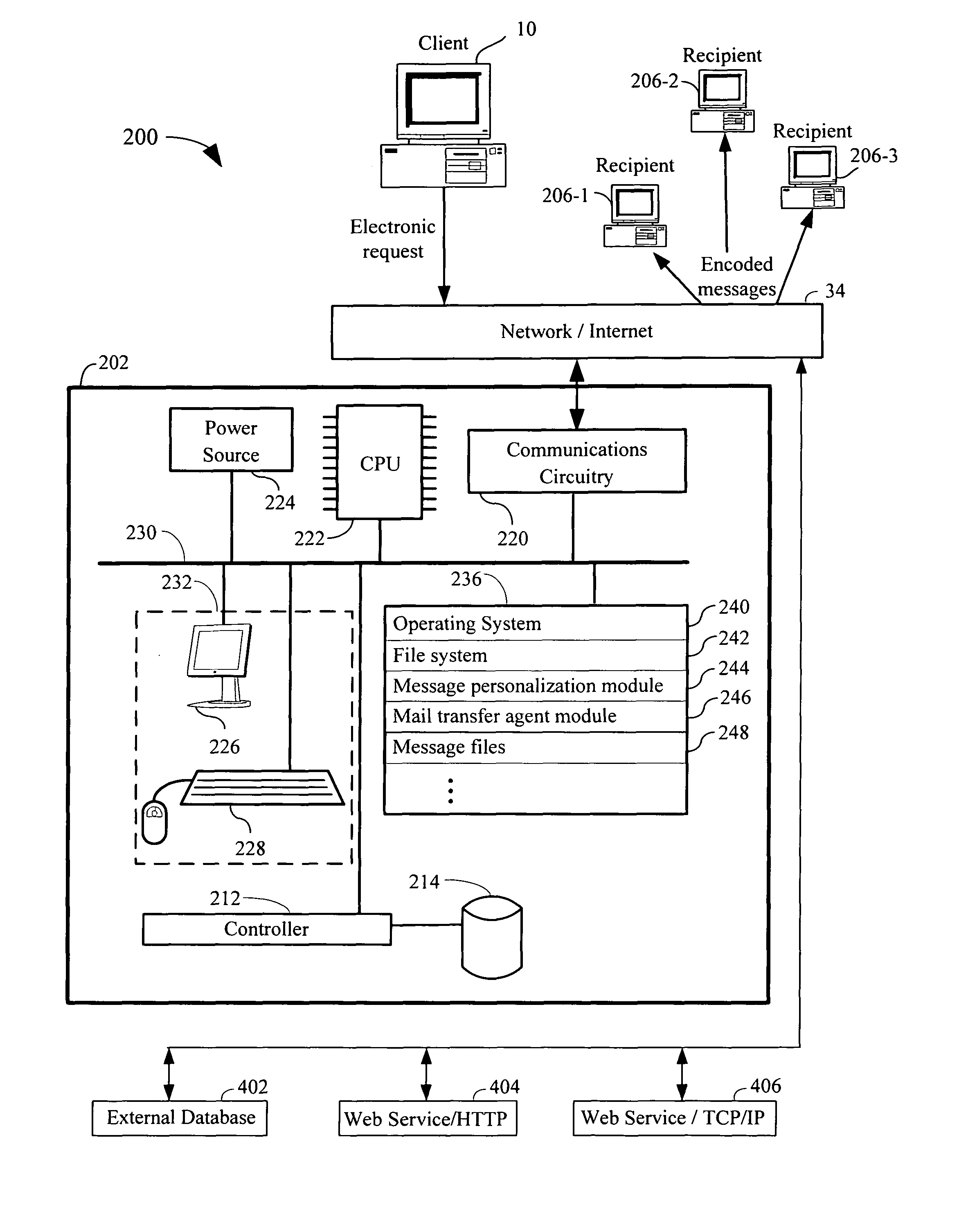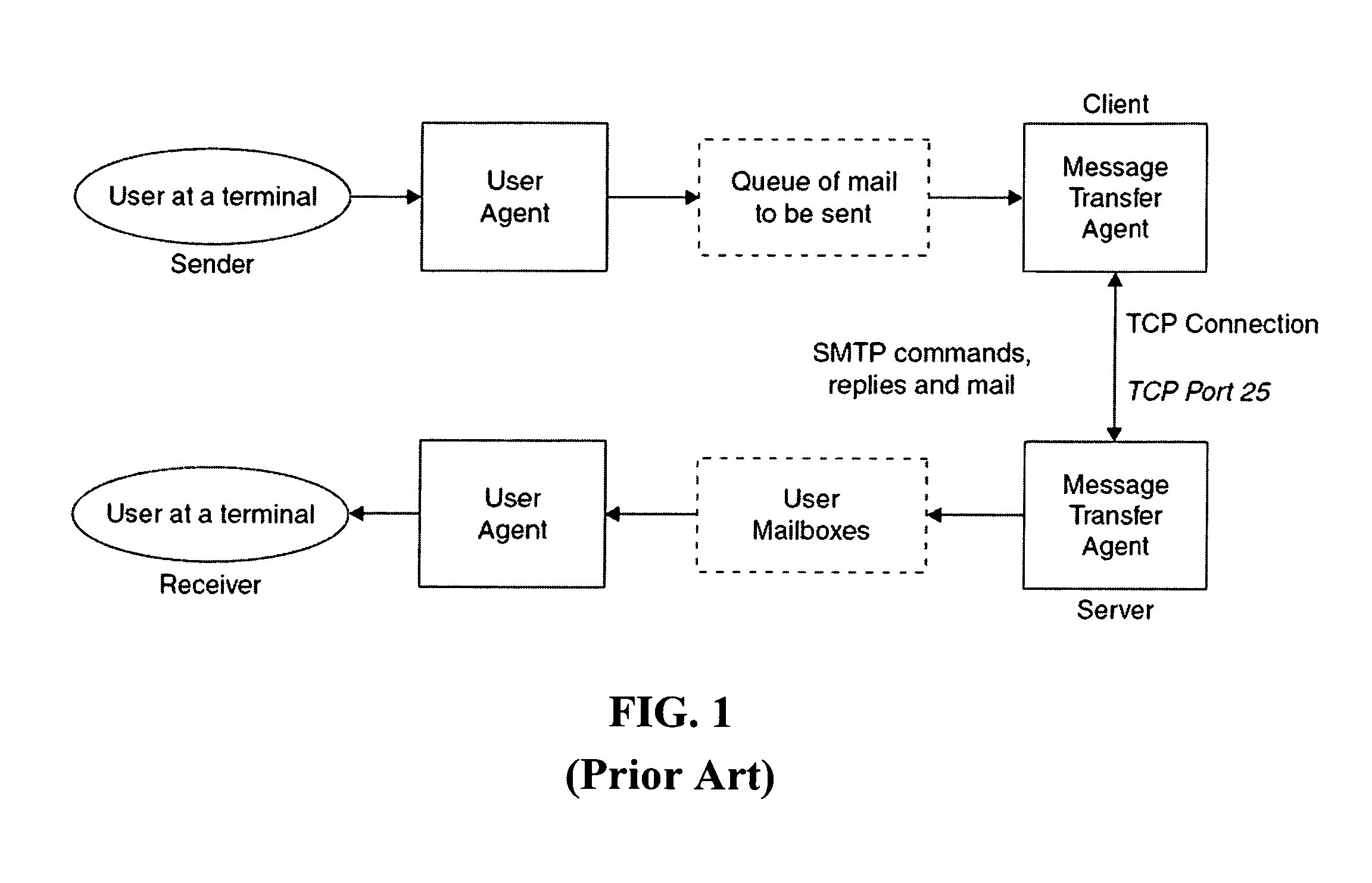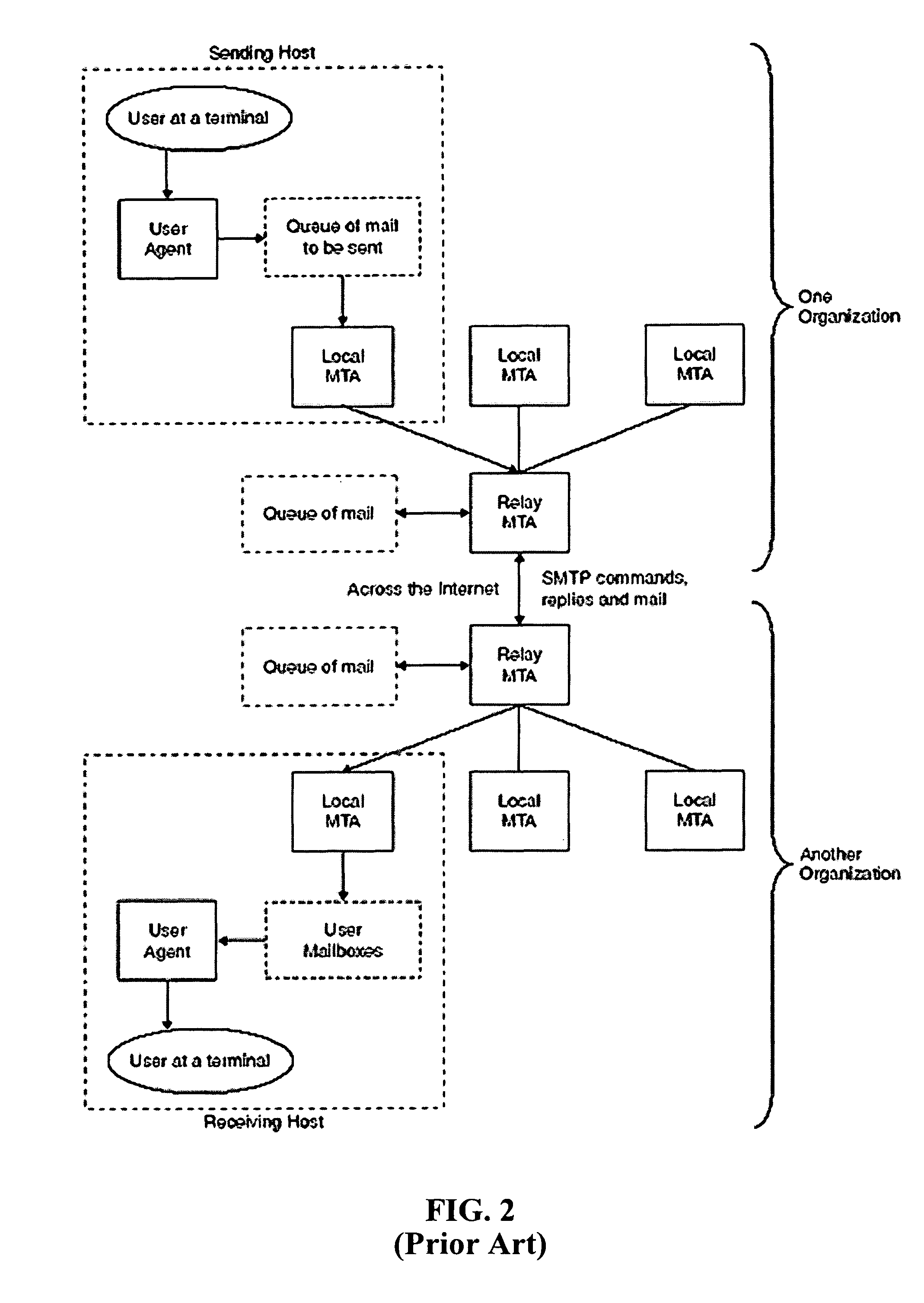Systems and methods for communicating logic in e-mail messages
a logic and e-mail technology, applied in the field of systems and methods for communicating logic in e-mail messages, can solve the problems of unsatisfactory mta systems and conventional user agents that do not provide satisfactory methods for supporting such features, and achieve the effect of facilitating data sharing
- Summary
- Abstract
- Description
- Claims
- Application Information
AI Technical Summary
Benefits of technology
Problems solved by technology
Method used
Image
Examples
Embodiment Construction
[0030]The present invention encompasses systems and methods for providing an electronic request (encoded e-mail) to a processing module, such as an of the present invention MTA, using the SMTP, POP3, X.400, ESMTP or MHS protocol or a logical variant thereof (e.g., a program similar to or derived from SMTP, POP3, X.400, ESMTP or MHS). Upon receipt of the electronic request, the processing module generates a customized e-mail using data from a data repository or any other data source. For a general reference regarding e-mail protocols, see Hughes, 1998, Internet E-mail: Protocols, Standards, and Implementation, Artech House Publishers, which is hereby incorporated herein by reference in its entirety.
[0031]FIG. 3 details an exemplary system that supports the functionality described above. The system is preferably a computer system 10 having:[0032]a central processing unit 22;[0033]a main non-volatile storage unit 14, for example, a hard disk drive, for storing software and data, the st...
PUM
 Login to View More
Login to View More Abstract
Description
Claims
Application Information
 Login to View More
Login to View More - R&D
- Intellectual Property
- Life Sciences
- Materials
- Tech Scout
- Unparalleled Data Quality
- Higher Quality Content
- 60% Fewer Hallucinations
Browse by: Latest US Patents, China's latest patents, Technical Efficacy Thesaurus, Application Domain, Technology Topic, Popular Technical Reports.
© 2025 PatSnap. All rights reserved.Legal|Privacy policy|Modern Slavery Act Transparency Statement|Sitemap|About US| Contact US: help@patsnap.com



